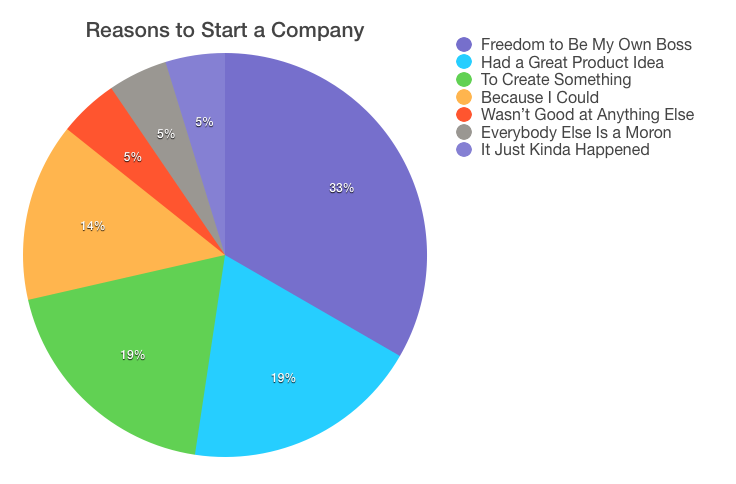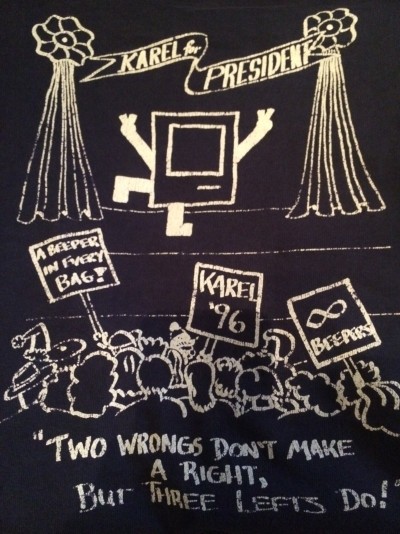When we write proposals for Facebook applications, we typically include definitions for the Facebook-specific terms we use, like wall, mini-feed, and notification. Facebook doesn’t provide much in the way of official definitions for these features, and new users are often confused by the similarity between the wall, messages, notifications, requests, and emails.
To clear up some of the confusion for people new to Facebook or new to Facebook applications, here is my unofficial guide to some select Facebook viral features. For each feature, I’ve provided a description, the “intended” usage, the common usage, and some comments. Note that for most features, there is no “official” usage so the “intended” usage is what I’ve distilled from talking to other developers, both inside and outside Facebook.
| Requests | |
|---|---|
| Description | Linked from the user’s home page as either an “invitation” or a “request” for a specific application (e.g. “5 smarty pants invitations”). Users view the detail of the request and can choose to take an action or ignore it. Requests are sent from a specific user (e.g. “Larry Magoo sent you an invitation using Smarty Pants”). |
| “Intended” Usage | Requests are intended for cases where a user is asking another user to take an action via an application. For example, inviting a user to add the application, or challenging the user to a game. |
| Common Usage | Many applications have a “forced invite” page that users are taken to when they install the application where the user is prompted to invite their friends. These pages usually send requests. Requests require explicit confirmation on the part of the sender so they are typically used as-designed. |
| Comments | There are benefits and drawbacks to using Requests versus Notifications (below) that we balance carefully when building an app. |
| Notifications | |
| Description | Show up below requests on the user’s home page as a single link (they are not broken out by application) and take the user to a page where they can read all of their notifications. Notifications are text messages that can contain links. They do not necessary come from a particular user. |
| “Intended” Usage | Indicates that something has changed that affects the user, likely without the user being directly involved in the change. For example, “Larry just moved 3 spaces ahead of you” or “You have a message waiting. Click here!” |
| Common Usage | Often used interchangeably with requests since Notifications currently have the advantage (soon to disappear) of optionally being sent via email. The metrics for how many notifications an app can send also make them often more attractive than requests, and they often don’t require sender confirmation, but they are easier for users to mark as spam and also easier to ignore. |
| Comments | The email functionality built into notifications is being removed soon. Due to the spam controls and the ease of ignoring them, our applications tend to use notifications as-intended and thus aren’t blocked for being spammy. |
| Description | Once a feature of notifications, emails are now Their Own Thing. Applications can send email messages to users, including some basic HTML content. These users must already have the application installed, preventing applications from spamming random Facebook users. |
| “Intended” Usage | Likely intended to offer basic off-site messaging for applications that need to alert users about something deserving more attention than a Notification. For example, a gambling app could offer users an “email me when the pot reaches XXX dollars” feature, which would bring them back to Facebook. |
| Common Usage | Yet to be seen. Few applications are using the new email feature because email through notifications still works (for now). |
| Comments | Some developers have expressed frustration with the limitations of this feature, both for testing and for real usage. Expect the mechanics and real-world usage here to change over the next few months. |
| Mini-Feed | |
| Description | The small area in the upper-right of a user’s profile page that contains updates, including new friend connections, new applications installed, and messages sent by applications. Mini-feed items can contain links and images. |
| “Intended” Usage | To indicate that the user has performed an action with the application, created something new, or their status within the application has somehow changed. Examples: “John just created a new taco using Taco Shoppe”, “Juliana just attained Master Chef status in Wild World of Cooking”. |
| Common Usage | Varies a ton — there are a lot of clever feed items. The feed is pretty loosely defined so that anything that changes within an app is viewed as a legitimate news event. There are metrics that limit feed item posting from a particular app for a particular user. |
| Comments | Users can now mark feed items as spam, which is a relatively recent change. |
| News Feed | |
| Description | The long list of updates you see in the middle column of your home page. The feed items include updates from friends and advertisements. A feed is just a partial rendering of all of your friends’ mini feeds (above). In other words, it picks out the most “relevant” items from all your friends’ mini feeds, adds in some advertising and serves it up to you. |
| “Intended” Usage | It’s supposed to provide you with a quick view of what’s going on with Facebook and what your friends are doing. |
| Common Usage | Reading through feed items is one of the main draws of Facebook, and a feature that other social networks are beginning to emulate. It gives the sense that there is lots of activity and always gives the viewer new things to try out. |
| Comments | Clients often ask us if we can “post to a friend’s feed.” It doesn’t really work that way. You don’t post to the feed; you post to the mini-feed. If you’re lucky, and the feed item is relevant, it will be seen on friends’ feeds. If it’s something that’s intended for a particular user, it should likely be a Notification or a Request. |
| Wall | |
| Description | The wall is a section of a user’s profile page where other users can write messages, leave gifts, or attach application content for others to see. The recipient can “reply” to the sender’s wall, creating a “wall-to-wall” interaction that’s cute in theory, but results in bizarre half-conversations on each person’s wall! |
| “Intended” Usage | Ideally, used for leaving simple “hey, what’s up?” messages, and giving users publicly-visible pictures and gifts. The half-conversation functionality, while strange, is there by design, likely in response to how users ended up doing it. |
| Common Usage | Applications can “hijack” the wall in a way by offering attachments. For example, our Music Mixes application gives users the option of giving a mix to their friends by posting it on their wall for anybody to play. |
| Comments | The Wall is one of the many features that various applications have “replaced” by offering improved versions. Two of the most popular Facebook applications are SuperWall and FunWall, which provide a wealth of features that the built-in wall does not. |
| Messages | |
| Description | Simple web-based email. Users are notified via email that they have a message on Facebook. Messages can only be viewed on the site and users can Reply, but there is no forwarding or other email-like features. |
| “Intended” Usage | Messages are threaded, so they are probably intended for users to carry on an ongoing conversation. There are no folders, forward, or cc, so messages were likely not intended to replace email. |
| Common Usage | Messages have replaced email! Many users on Facebook prefer Facebook’s messaging to email because there are fewer spam concerns (senders are generally who they say they are) and all their friends are already there. Applications can add attachments to messages, just like they can with Wall posts. |
| Comments | Look for more advanced email-like functionality as messages take over email. |
| Gift | |
| Description | An item given from one user to another. |
| “Intended” Usage | Originally, gifts were more specifically small graphical images that you could buy on Facebook for $1 each and give to a user with a message. Gifts could be public or private. |
| Common Usage | The term has widened in scope to include other types of virtual goods that are exchanged on Facebook (and other social networks). One of the first apps to take off was Free Gifts, which offered functionality nearly identical to Facebook’s gifts but without any charges. Facebook’s feature still exists, but gifts now range from free artwork to user-generated gadgets. |
| Comments | Gifting is a great way to get new users if done right! |
| Poke | |
| Description | A no-effort form of messaging. Users can click a link from another user’s profile to “poke” them. The poked user gets a message saying they’ve been poked. |
| “Intended” Usage | Depending on the poker and pokee, it could be a flirt, a request to chat, or just a hello. |
| Common Usage | Largely replaced by applications like SuperPoke and the general sense that the whole poking thing has played out and isn’t that interesting anymore. People today apparently prefer to throw sheep at each other. |
| Comments | Applications don’t directly interact with the poke feature, but I’m including you on the list so you’ll know what it means if you get poked. |
| Event | |
| Description | Similar to a Request but for a specific thing happening at a time and place. Users can invite people to an Event and the event’s page tracks the responses. |
| “Intended” Usage | Built as an informal way to throw a party and invite people on Facebook. |
| Common Usage | Events are huge! Facebook does more events than Evite. There is currently no way for applications to interact with the event system, but we’re hoping it’ll come soon! |
| Comments | |
| Page (a.k.a. Business Page) | |
| Description | Similar to a user profile, but for a business or group entity, like a restaurant or band. |
| “Intended” Usage | Intended to avoid the problem of businesses signing up as users and marketing running amok on Facebook. Users are supposed to become “fans” of the entities on pages and can go to the Page to interact with applications, talk to other fans, and learn more about the business entity. |
| Common Usage | Too early to say. Signing up as a fan doesn’t seem to have taken off and few business pages offer a compelling reason to come to their Page. Pages can add applications, and developers can build applications specifically for Pages, but few developers have experience in this area at this time. |
| Comments | Context Optional built one of the first Pages applications, an OpenTable Reservations application that restaurants can use to let diners book a table right from Facebook. The app has been publicly described as “one of the best examples of an application for Pages” by representatives of Facebook. Woo hoo! |




